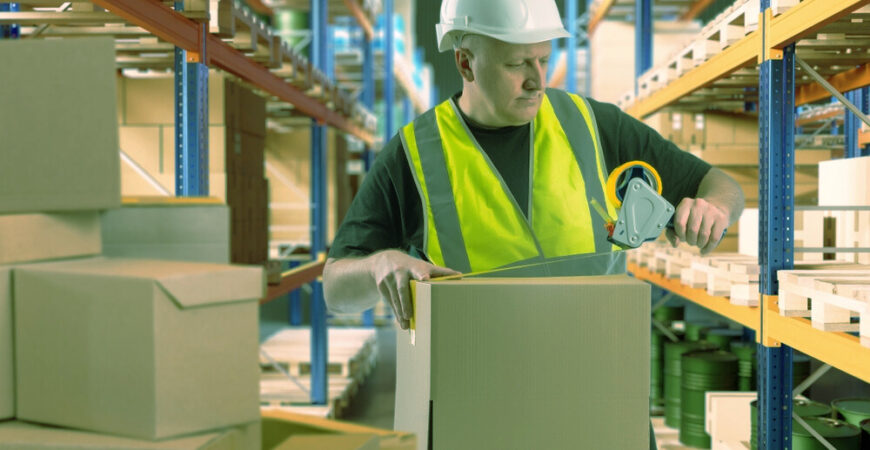When it comes to managing inventory and delivering products to customers efficiently, businesses are often faced with an important decision: should they use a fulfillment center or a warehouse? The right choice depends on several factors, including order volume, customer expectations, and how fast products need to move.
Understanding the difference between a fulfillment center and a warehouse can help streamline your supply chain and improve service quality. Both play a role in logistics, but they serve distinct functions that can affect everything from delivery speed to your bottom line.
Defining the Options: Fulfillment Center vs Warehouse
Before diving into the pros and cons, it’s important to clearly define what each term means. While they may seem interchangeable, fulfillment centers and warehouses offer very different services.
Fulfillment Center
A fulfillment center is designed to handle the entire order process from start to finish. This includes receiving inventory, storing products, picking and packing orders, and shipping directly to customers. These facilities are optimized for fast-moving goods and are highly integrated with e-commerce systems, making them ideal for online retailers and businesses with high-volume, frequent shipping needs.

Warehouse
A warehouse, on the other hand, is primarily used for storing products over a longer period. Traditional warehouses focus on inventory storage, not on order processing or shipping. They are ideal for businesses that need to hold bulk inventory, raw materials, or seasonal stock but do not require daily shipping or order fulfillment.
Core Differences That Impact Your Business
Fulfillment centers and warehouses serve different goals. One moves products quickly. The other holds inventory. The best fit depends on how your operation works today and where you want it to grow next.
Speed and Service Expectations
Fulfillment centers are built for fast turnaround. Orders are picked, packed, and shipped daily, sometimes within hours. This speed helps meet rising customer expectations for fast delivery. Traditional warehouses, on the other hand, are slower-paced. They’re geared toward long-term storage and don’t typically handle daily order flow.
Technology and Automation Capabilities
Fulfillment centers rely on integrated systems and automation to manage orders, track inventory, and sync across multiple sales channels. These tools cut down on errors and help teams respond in real time. Warehouses may use basic tracking systems, but they often lack the software needed to support direct-to-consumer fulfillment or fast order processing.
Inventory Turnover and Storage Duration
High inventory turnover is common in fulfillment centers. Products are received, stored briefly, and shipped out quickly. They’re designed for businesses that move goods fast. Warehouses are better suited for low-turnover inventory, bulk storage, or items that stay on hand for longer periods.
Scalability and Flexibility
Fulfillment centers are built to scale. They can handle seasonal spikes, flash sales, and growth across sales channels. Their processes are set up to adjust quickly. Warehouses are more static. While they provide space, they don’t offer the same level of flexibility when it comes to labor, technology, or fulfillment support.
The Case for Fulfillment Centers
More businesses are shifting to fulfillment centers because they offer more than storage. They handle the full order process, connect directly to e-commerce platforms, and help brands deliver faster, more accurately, and across more channels.
Meeting Customer Expectations
Speed matters. Fulfillment centers are built to ship orders quickly and accurately. That kind of reliability helps improve reviews, build trust, and drive repeat purchases. Delays caused by slower warehouse processes can have the opposite effect.
Integration with E-Commerce Platforms
Fulfillment centers connect directly to platforms like Shopify, Amazon, and WooCommerce. Orders come in automatically, inventory updates in real time, and tracking data flows straight to the customer. Warehouses typically don’t offer this level of connection.
Real-Time Inventory Visibility
Having a clear view of what’s in stock helps avoid overselling, stockouts, and delays. Fulfillment centers give you up-to-the-minute inventory data across all channels. That visibility is often missing from traditional warehouse setups.
Streamlined Order Processing and Shipping
Once an order hits the system, a fulfillment center processes it fast. From picking to packing to shipping, each step is optimized for speed and accuracy. Warehouses often require extra coordination and time to ship orders, especially for direct-to-consumer sales.
Support for Multi-Channel Distribution
Fulfillment centers can handle orders from multiple sales channels at once. Whether it’s retail, wholesale, or online, the right fulfillment partner makes it easy to manage all of it under one roof. Warehouses may not have the tools or staff to support this level of complexity.
Fulfillment Center Services
Fulfillment centers offer more than fast shipping. They handle hands-on tasks that save time, reduce complexity, and keep operations moving.
Pick & Pack Fulfillment
Each order is pulled and packed as soon as it comes in. Packing methods can be tailored to fit the product or match brand preferences.

Inventory Management
Products are tracked from arrival to shipment. Real-time data keeps stock levels accurate and helps prevent overselling.
Kitting & Assembly
Items can be grouped into ready-to-ship kits or assembled before they leave the facility. This works well for product bundles or special promotions.
Cross-Docking
Inbound freight is sorted and redirected quickly. Instead of sitting in storage, goods move straight to their next destination.
Labeling / Relabeling
Items are labeled to meet specific shipping, retail, or branding requirements. Fulfillment teams can relabel products when packaging changes or new barcodes are needed.
Common Myths About Warehousing vs. Fulfillment
Misunderstandings around warehousing and fulfillment often lead businesses to choose the wrong solution. Here are some common beliefs that don’t hold up.
“Warehouses Are Cheaper” — But at What Cost?
The monthly rate might look lower, but warehouses often lack the systems and labor needed to process orders. That means more work on your side and slower delivery. Over time, missed sales and inefficiencies can cost more than a fulfillment center ever would.
“I Only Need Storage” — Why That’s Limiting Your Growth
Storage alone doesn’t move products. If you’re managing order processing, packing, and shipping separately, you’re adding layers of complexity. Fulfillment centers give you the tools to move faster and serve customers better, all in one place.
“Fulfillment is Only for E-Commerce” — Think Again
While e-commerce businesses rely heavily on fulfillment centers, they’re not the only ones who benefit. Retailers, subscription brands, B2B sellers, and manufacturers also use them to manage inventory, ship orders, and scale more efficiently.
Why Businesses are Moving Toward Fulfillment Solutions
More companies are choosing fulfillment centers to save time, cut overhead, and ship faster. They want fewer moving parts and more control over the customer experience.
Instead of managing storage, packing, and shipping separately, fulfillment centers bring it all under one roof. This keeps operations lean and helps businesses adapt when order volume changes.
How B&C Logistics Group Sets the Standard
B&C Logistics Group, based in DeKalb, Illinois, helps businesses get products out the door quickly and accurately. The team handles inventory, order prep, and shipping without overcomplicating the process.
Services are practical, flexible, and built around what each operation actually needs. You get clear communication, consistent turnaround, and a logistics partner that keeps things moving.
Ready to streamline your fulfillment? Call B&C Logistics Group to get started.

